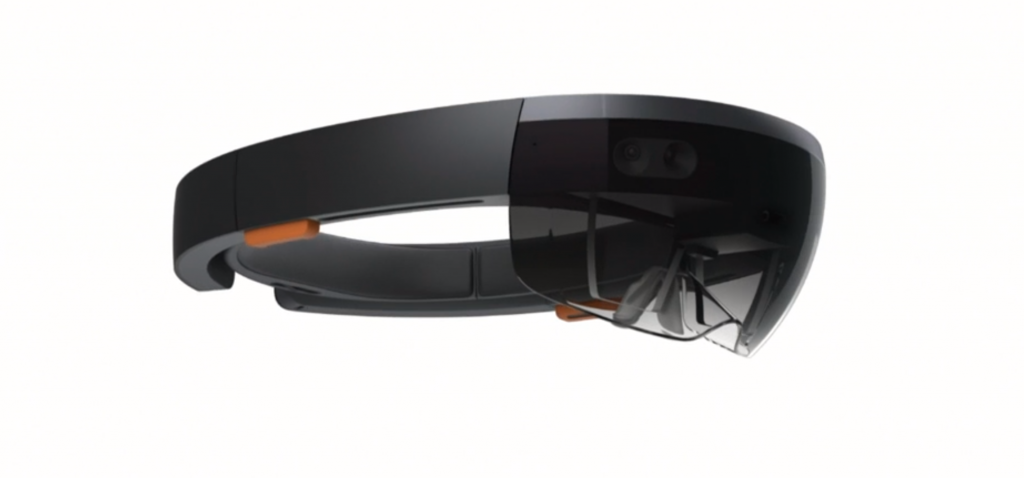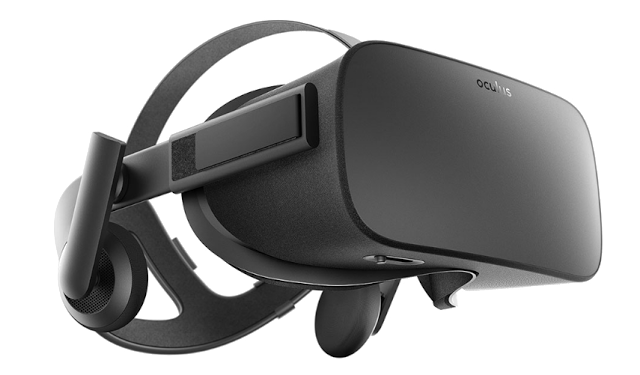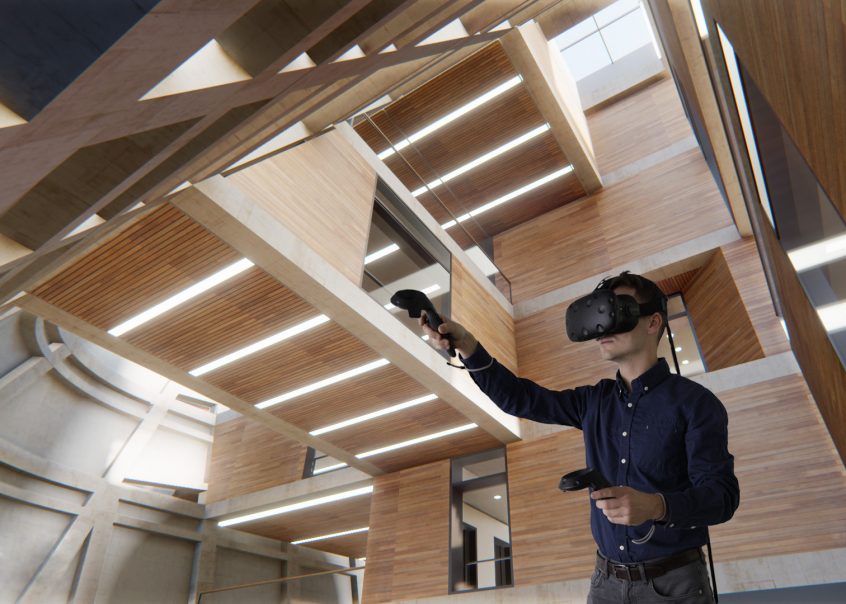Since my shared a preview of the Virtual Reality application Archispace. I’ve been receiving allot of questions from designers on how to start in using Virtual Reality in their work. This post will give some useful tips on choosing the right VR hardware for your Architectural work and presentations.
Architects have a long history of using crafty methods like sketching and model-making to study and present clients our spatial solutions for buildings. Over the past decades many technologies like photography, ray-trace rendering and photo editing tools have enabled us to present our ideas and designs with more realistic computer generated visuals. This was all made possible thanks to Computer Aided Design (CAD) software used for our technical drawings. Nowadays improved data management methods like Building Information Modeling (where all design partners collaborate on one 3D database) help to streamline our design process and make the available 3D data more accurate, realistic and valuable for testing our designs in Virtual Reality.

Virtual Reality allows us to communicate with space
Rendered images give us better understanding of the looks, functionality and atmosphere before something is built. Drawings, diagrams and animations teach us how a building works or will be perceived when we use it. Virtual Reality will take this a step further by communicating with the actual space itself. It is a valuable mix between a physical scale model and computer generated visuals that will give observers the freedom to focus on the elements and spatial aspects they find important. Giving us valuable user information about the clarity and perception of a design so we can make our architecture stronger, more human and understandable for everyone. Likewise as an architect we can communicate our spatial ideas (for example ceilings, balustrade or table heights) in a much easier way by showing the differences in Virtual Reality, avoiding having to make hundreds of unnecessary images, drawings, diagrams and even mock-ups to explain the design proposals and to avoid getting disappointed on the dimensions when the building is finished.
Hardware and technology
Detailed 3D models play a key role today’s design meetings, studies and presentations and allows us to test our buildings digitally before construction begins. The accuracy and details of these Building Information Models will also support the breakthrough of Virtual and Augmented Reality in the Architecture, Engineering and Construction sector. That said if you don’t (yet) use the latest BIM tools to document your projects the available software tools for “interactive” VR will be more limited. Investing in a proper BIM suite and knowledge for your office will help your office to also make full use of the latest design technologies like Computational Design, Cloud Collaborations and Virtual Reality.
There are a large number of Head Mounted Displays (HMD) that consist of two lenses feeding each eye with a perspective scene. There is a difference between Mobile Virtual Reality headsets that are driven by smartphone technology and wired Virtual Reality Headsets that needs to be connected to a powerful PC. The technical differences make these HMD’s each have its their own strengths and weaknesses, but both are valuable for architectural Virtual Reality. The mobile solutions are great for showing lightweight 360 stereoscopic pictures and small augmented 3D models in meetings but the wired solutions allow for more powerful immersive VR applications. At Mecanoo we use both mobile and wired headsets depending on the assignment, software, location and level of immersion needed.
Mobile hardware
The budget solution to start using VR is ordering a couple of Google Cardboard‘s and print them with your company logo. This is how we originally started using VR at Mecanoo two years ago and most 3D software now offers the ability to render/prepare “stereo panorama” images that can be viewed on your smartphone in this Cardboard box. There are also a number of free and paid applications that allow you to host and share these “stereo panorama” images with your clients. At Mecanoo we developed a custom web-platform for sharing these VR images so we can integrate it with our other online media.

our mecanoo Cardboard viewer
There are dozens of universal plastic “cardboard style” headsets available that offer better lenses and a more professional feel then a cardboard box. We currently have a couple of these headsets in our office and they are used for presentation of our 360 images during design meetings or promotion materials for clients. For this we use branded Mecanoo Carl Zeis VR One and Homido headsets combined with our smartphones. The quality of these headsets varies and some preform even worse then the cardboad boxes so better to do some research before you buy one of these. I recommend going for the Homido since its flexible for all smartphones, has good flexible lenses and a solid quality to price ratio.

our mecanoo Carl Zeis VROne viewer
If you want to go one step further, have a look at the Samsung Gear VR this “Cardboard+” has a integrated bluetooth controller but only works with a Samsung Galaxy S6 or newer smartphones. The software to support mobile VR controllers is still limited for architecture so prepare to pay extra for a development service or do some own programming to make full use of the controls on these headsets.

For a slightly more professional option I suggest looking into the Google pixel phone with a Google daydream headset these phones are built by HTC with mobile VR in consideration so they have more special features, power and a higher display resolution for VR. These headsets also comes with a tracking controller but like the Gear VR the available software is still limited.

If your architectural company has money to burn then you could step into the Microsoft Hololens development program for $3000,- and take the step to Augmented Reality. Please mind that Augmented headsets are still under heavy development and only a limited group of developers are publishing useful software. Augmented Reality has a different usage then Virtual Reality and can be useful to “Augment” information over existing geometry. This is has great potential for showing BIM info on the construction site or showing a virtual scale model on a tabletop during design-meetings but is not so useful for architects trying to fully immerse or show someone a fictional virtual space. The Hololens also has some limitations such as the limited field of view (breaking the immersion) and limited graphic performance for larger models. Augmented Reality has been trending for some time but the hardware and software required are demanding and difficult to engineer. Until this technology matures it’s just as useful to buy a high end smartphone/tablet for that price and start experimenting by developing your own Augmented Reality experiences on those devices.

If your like to experiment with both Augmented and Virtual Reality in a mobile headset then you might want to check the bridge headset from Occipital. I orderd this headset last year and the technology of 3D scanning and inside outside VR tracking on a mobile device is very promising. 3D mobile technology like this will improve over time. And more dedicated mobile VR headsets will hopefully follow soon. The Iphone 7 that I use in this device has a hard time rendering larger scenes, but it is a great device if you want to experiment or start developing your own mobile Virtual, Augmented and Mixed Reality tools! (I also preferred a new iphone 7 with a usefull 3D sensor over spending $3000,- on a Hololens 😉 )

Both Google and Apple (rumors) are now building an integrated 3D scanning sensor for their next augmented reality smartphones, you can check project Tango if you like to know more on these Augmented mobile developments.
Wired hardware
For all wired VR solutions you need a beefy “gaming PC” with lots of graphic power and some dedicated space for walking around. Making this pricey and more difficult to set up. It is also the most mature and rewarding way to interact with VR and has many software solutions that support VR viewing of large Architectural models. The minimum specifications I recommend for a VR workstation are an fast SSD drive, 16GB DDR4 RAM, intel i7 3.5 GHz processor and the fastest GPU you can afford (minimal GTX 1070). There are some good VR ready PC’s that are recommended by Oculus and HTC Vive so check their min requirements for more information.

Oculus is one of the two main players in the wired HMD scene, their latest headset the Rift CV1 is a developed product that feels much better then their development kits DK1 and DK2. End of last year they released the official touch controllers that are a must if you want to get the full VR experience. Oculus has the advantage over HTC Vive that the headset is more compact, light and easy to connect than the Vive. I also prefer the lenses, ventilation, headstrap, integrated headphones and face foam material over that of the Vive. Those features make the Oculus more durable and nicer to wear by your clients. The touch controllers also feel more natural and light then the Vive wands. At mecanoo we use the Oculus with Enscape to walk our clients trough our Revit models. One mayor downside of the Oculus Rift is that it does not have good support for Room-scale virtual reality. That means this headset is made for standing or seated and slightly moving around but you should not turn around completely or walk away as the sensors will loose track. Adding aditional sensors is possible but it never adds the same level of freedom that HTC Vive Roomscale VR offers.

HTC vive room-scale virtual reality features allows the VR experiences to be even more immersive then the Oculus. It simply means that you can mount the sensors in 5 by 5 meter square and you are completely free to walk, run, jump and even lie down in that space to study any aspect of your design in Virtual Reality. Next to this I feel the controllers are slightly more spatial accurate then the Oculus touch controllers, giving me that extra accuracy I need when modeling and developing my application. That said, the headset itself feels more bulky and less developed then the Oculus and I look forward to a more developed version without these chunky glare fresnel lenses and some proper headstraps. Having this amount of spatial freedom also comes with a downside as you have to prevent clients from tripping over the cable or running into a wall 😉 HTC is planning to release a wireless upgrade this year to solve the cable problem and making it even more immersive. But in-spite of these downsides the HTC Vive is still my favorite VR headset for architecture since it offer the highest level of interaction with your space in Virtual Reality.

There are other HMD manufacturers that offer wiredVR headsets but these are currently not available or not easy to use for architecture. Examples are the playstation VR, Levono and other seated Windows VR headsets that are releasing later this year.

our mecanoo HTC Vive
Let me know if you liked this article or have any questions or additions. In my next VR article (If I find time next to developing my architectural VR application) I will give an overview of interesting software to start using for Architectural VR presentations and design.


5 Comments on “Virtual Reality hardware for architecture, where to start?”
Great round up Johan!
Well,Great post. Thanks for share.
Wow, this article was such a fun read. I never knew that virtual reality and architecture could work together. My husband is an architect and loves video games, I am surprised he never thought of this. I will have to remember this next time he asks for VR software.
Hi johan, thanks for the great overview. I’m using ArchiCAD and have exported models with it’s BIMx tool and viewed them in google cardboard. Trying to step up the performance a bit I bought a Samsung S9 with Gear VR. Unfortunately, I have big problems, finding an app where I can export CAD models to Gear VR and view them in a walkthrough. I could export from Rhino as well. Do you have any tips.
Hi Eirik,
When you Render 360 degree (stereo) images from your CAD you can make them into an interactive tours using a variety of software. At Mecanoo we use Pano2VR (https://ggnome.com/pano2vr) as has as a good price, allows full control of the tours look/feel and allows to host it your own webserver for secure online sharing. If you just want to upload and share a simple VR tour of images (not for secret or confidential projects) you can also have a look at google free tour sharing solution: https://vr.google.com/tourcreator/ there are also tools that allow you to built your own offline VR tour apps like http://www.instavr.co/ but they are generally a bit pricey for just sharing a tour with a few people.
The Samsung Gear VR still has limited GPU power so when you want to make a real-time walk-through you need a more powerful headsets and a good computer that would allow you to use https://enscape3d.com/ to turn your ArchiCAD and Rhino models into live walk-able VR models.